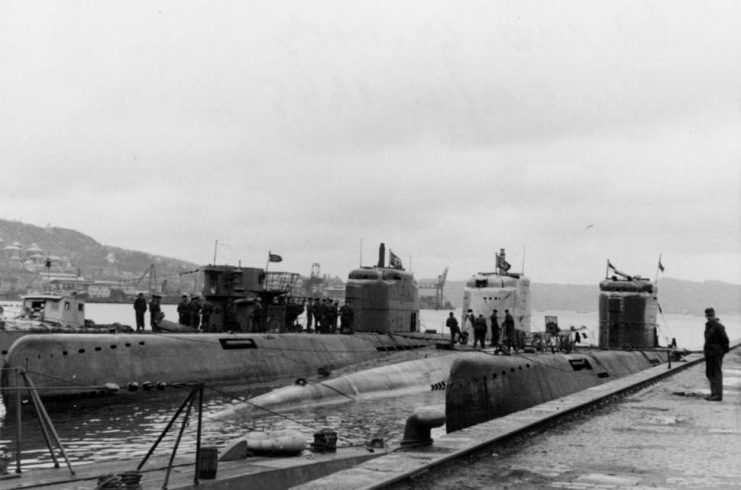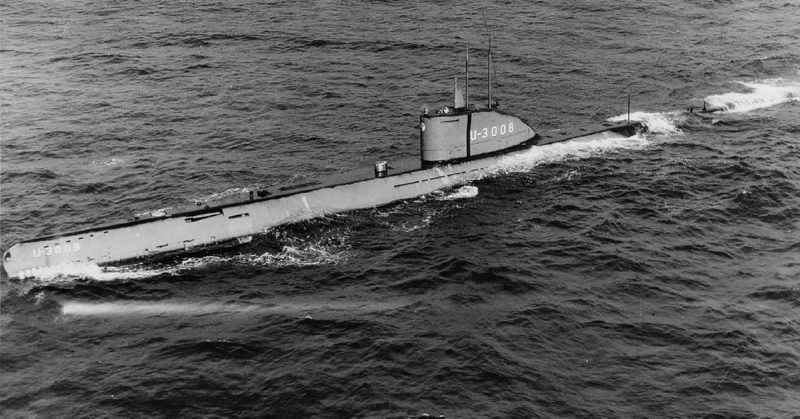One of the more colorful rumors floating around about the end of the Second World War was that Hitler and his inner-circle managed to escape to live long, consequence-free lives with all of their Nazi loot in some undisclosed country in South America, usually thought to be Argentina. It made a certain sort of sense given that it was widely known that some of the most notorious members of his circle did actually make it to South America, namely Eichman and Josef Mengele. Still, one of the key points of evidence to suggest that the theory may, in fact, be plausible is the recent recovery of a super-advanced submarine off the coast of Denmark earlier this year.
The wreckage of a submarine that sunk in 1945 has been found in the Skagerrak Straight that flows between Denmark and Norway. At the time the submarine, which was called the U-3523, was considered to be at the cutting edge of marine technology, although that didn’t stop it from being sunk by a British B24 Liberator bomber airplane – the day after the liberation of Denmark from Nazi occupation. It was reputed to be incredibly quiet, extremely fast and included a battery system that would allow it to remain submerged long enough to be able to get it from Europe to South America undetected, which would mean remaining submerged for several days at a time.

The Sea War Museum Jutland discovered the wreckage of the U-3523 approximately nine nautical miles away from where it was thought to have been sunk. Researchers suggest that the reason the submarine had gone undiscovered for so long was that the Liberator bomber crew had reported the wreck as nine nautical miles east of where it was sunk. The submarine itself was 250-feet long (76 meters) and stabbed into the seafloor approximately 400 feet (120 meters) below the water’s surface, bearing only a slight upward slant with the boat’s stern floating 65 feet (20 meters) above the floor of the sea.
“This was a very special U-boat. It was the most modern submarine the Germans built during the war. It was highly modern and well ahead of its time,” Sea War Museum Jutland director Gert Normann Andersen told Ritzau.
Only two of the 118 originally ordered actually saw service, and of those two only one submarine remains, and it is presently being displayed in the German Maritime Museum at Bremerhaven. The story on the submarine was that it was being used off Wilhelmshaven as a training vessel, until May 5th, when the war ended, someone decided to take it and run. What is known is that the boat left Denmark with a complement of 58 crewmembers, and given that the departure date comes days before the surrender of German forces in Denmark, the Netherlands, and northern Germany, the museum researchers estimate that the likely intent was an escape.

“Why they were fleeing, and where they were going, no-one knows. So it’s exciting in a way,” Andersen said.
While the evidence against this particular submarine as being the one that was to lead the Nazi leadership to freedom is inconclusive, there is some to suggest that it wasn’t. The final telegram sent by the sub on the fifth of May, 1945, mentioned neither Nazi treasure nor officials, lending itself to skepticism regarding whether Captain Willi Müller and his crew were indeed smuggling Nazi passengers rather than attempting to escape themselves. Especially given that the U-boat left port five days after German radio announced the death of Adolph Hitler.
The disappearance of the U-3523 was connected to the rumors circulating at the end of the Second World War that the Nazi leadership had escaped with their untold fortunes intact to South America. However, the U-boat rests under 123 meters of water, and Sea War Museum Jutland states that it has no plans whatsoever to raise it above the waves. Until this changes, the mystery of the final resting place of the Nazi leadership and all of their treasure will remain unsolved.
